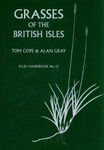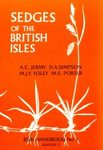Field / Identification Guide
Out of Print
By: Chris Metherell(Author), Fred J Rumsey(Author)
220 pages, colour photos, b/w line drawings, colour tables
![Eyebrights (Euphrasia) of the UK and Ireland Eyebrights (Euphrasia) of the UK and Ireland]()
Click to have a closer look
About this book
Related titles
About this book
Eyebrights are unassuming plants that are found in a wide range of habitats. Identification, especially in the field, is often difficult and the emphasis of Eyebrights of Britain and Ireland has been to provide a field guide, something that up to now has been lacking, and not focus in detail on taxonomic issues, particularly as modern DNA analysis is still ongoing and nomenclatural changes may yet be made. Where taxonomic status is uncertain, this is highlighted.
The taxonomy is based on previous work, but the species accounts have been rewritten to improve clarity. The descriptions for hybrid species are based on new work undertaken by the authors both in the field and with herbarium material. Eyebrights of Britain and Ireland deals only with species and hybrids from the UK and Ireland. European material has been examined but the keys and descriptions have not been tested for validity outside of the UK and Ireland.
Euphrasias are annual, hemi-parisitic, monoecious herbs. They are a highly variable in morphology, as a result of both genetic complexity and a high degree of plasticity to environmental conditions. Depending on the species concerned, there are grounds for taking both a narrow and a more wide-ranging approach to species definition, but for consistency the authors have adopted a more restrictive approach and excluded, as species, examples that could be described as hybrids. The authors have also endeavoured to avoid overlap between species descriptions to assist field identification.
Introductory chapters provide: a general description; indicate characters important for identification; cover the historical background; provide notes on classification, ecology, and hybridisation. Three sets of keys are provided, on the basis that no single key will work all the time but that by using multiple keys the chance of success will be substantially increased. Even so, it is estimated that it will be be difficult to make a certain determination 15-20% of the time for species and 20-50% of the time for hybrids. Comparative tables are provided to help elucidate groups of species that are highly related/easily confused.
Each detailed species description is accompanied by several high-resolution colour photographs, usually showing the whole plant in situ as well as key features. There are also detailed b&w illustrations of the plant and plant parts. In each species entry, characteristics of hybrids formed with that species are provided in brief, in a tabular form, with cross references to the main hybrid entry if there is one, and sometimes a generalised key. The main hybrid entries follow the species accounts and are presented in the same format.
A glossary, bibliography and index of scientific and English names are also provided.
Customer Reviews
Field / Identification Guide
Out of Print
By: Chris Metherell(Author), Fred J Rumsey(Author)
220 pages, colour photos, b/w line drawings, colour tables
"[...] While identifying eyebrights will never be easy, this latest BSBI Handbook will make it as easy as possible [...] It is written by the British authority on the group, Chris Metherell, and illustrated with colour photos and excellent line-drawings by Fred Rumsey. It has an abundance of keys: tabular keys, keys based on different regions, comparative keys, multi-character keys: take your pick. [...] This long-awaited handbook, the work of several years, will surely be the standard reference on eyebrights for years to come. It is colourful, nicely laid out, a model of its kind, and, for this type of book, a bargain."
– Peter Marren, British Wildlife 29(6), August 2018








































